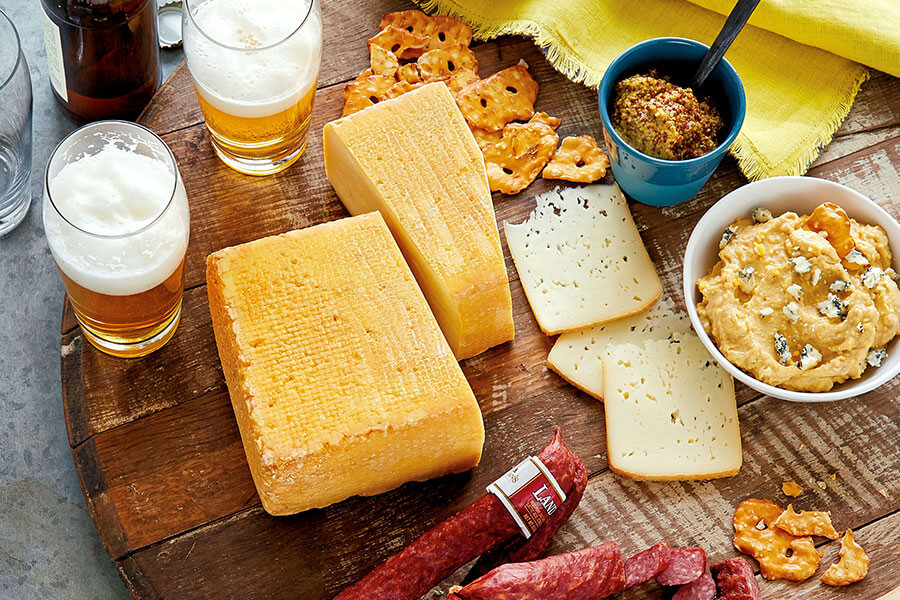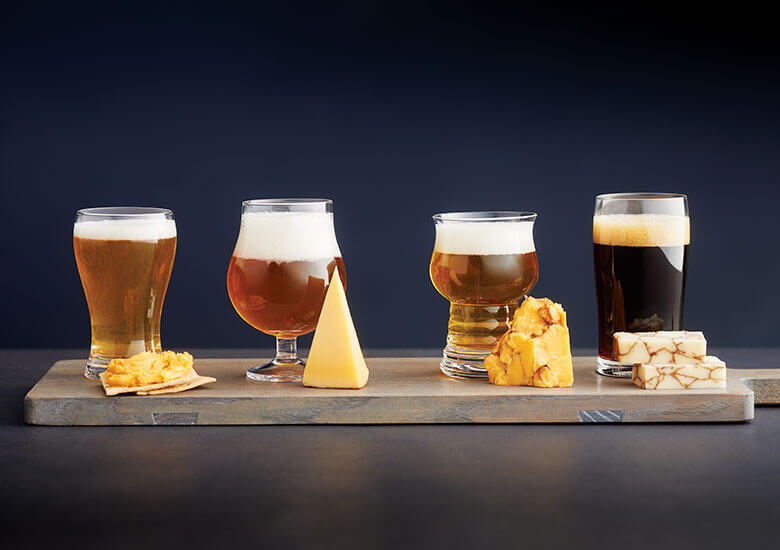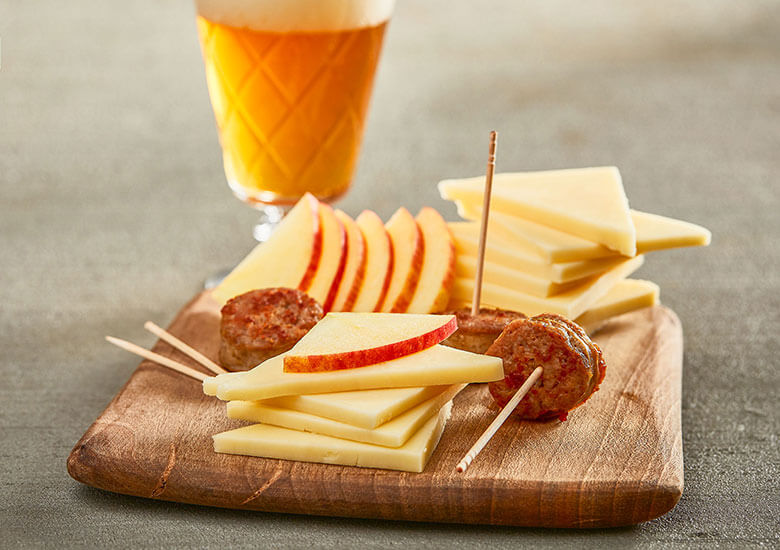Beer and cheese are two soulmates just waiting to be paired, and you—yes, you—are going to be matchmaker. You may be thinking that proper pairing is complicated, but thankfully, it’s easier than you think.
Basic tips

There are no hard-and-fast rules when it comes to pairing beer and cheese, but there a few guiding principles worth keeping in mind.
Balance intensity
Picture yourself cutting into a creamy, fresh piece of burrata. Fresh cheeses like burrata have beautifully light and delicate flavors that can easily be overwhelmed with a strong beer like a Belgian dark ale. On the other hand, a powerful and punchy limburger needs company that can handle its intensity—time to break out that dark ale from earlier. Less intense cheeses should generally pair with similarly light beers, while stronger cheeses require a more intense partner.
Find your perfect flavor combination
Now that we’ve established that intensities should be matched, we can move onto flavors. This is where things really get fun. Pairing flavors is less of a science and more of an art; some cheeses prefer a beer that strikes an entirely different chord while others enjoy a more complementary flavor partner. The best way to find your perfect cheese and beer pairing is to start by matching intensity and then experiment with different combinations of flavor and texture. We’ll get you started with some of our favorite combinations.
Our favorite cheese and beer pairings

Blue cheese and IPAs (or porters)
You may be surprised to hear that despite its uniquely powerful flavor, blue cheese pairs beautifully with a number of different beers. If you’re partial to hoppy beers, an IPA pairs wonderfully with blue. The bitterness from the hops cuts through the creamy richness of the blue. If your go-to beer is something more malty, you’re in luck. A dark and creamy porter will complement the texture and flavor of blue.
Butterkäse and pilsner
Booter-keh-zuh means “butter cheese” and once you’ve tried this decadent cheese, you’ll understand why. Butterkäse is a semi-soft, cow’s milk cheese that has roots in Germany, and while we’d gladly chow down on some butterkäse on its own, it’s even better when paired with a light, hoppy pilsner. The crisp and slightly bitter finish from a pilsner gives a lovely contrast to the richness of butterkäse. Be sure to get extra because it’ll be gone before you know it.
Aged cheddar and Belgian ales

This complex, flaky, and sometimes tangy cheese needs a dance partner that can keep up with its intensity. A slightly sweet and off-dry saison or Belgian ale is a perfect match for aged cheddar. Ciders can also pair with aged cheddar—just stick to a drier variety.
Gorgonzola and stouts
Although gorgonzola can be considered a close sibling of blue cheese, this heavyweight flavor champion requires a slightly different touch for pairing. A barley-laden stout has just enough creaminess to match the rich texture of gorgonzola while balancing the saltiness of the cheese with some sweet undertones.
Limburger and dark ale
Bold, creamy, and pungent are three words that come to mind when talking about this nose-kicking cheese. Limburger needs a partner that is tall, dark, and handsome, and a pint of a strong dark ale fits the bill perfectly. The sweetness from a high-ABV dark ale will balance the acidity that comes from the limburger while revealing some of the veiled fruitiness of this Germanic cheese.
Havarti and sour ale
Easy to pair and even easier to eat, havarti is ready to party with almost any beer that fits your fancy. Our personal favorite pairing, though, is a delightfully tart sour ale. Havarti has a rich, buttery, and slightly sweet flavor that gets gently swept away by a sour ale—cleansing your palate so you can start your love affair with this cheese all over again.
Cheese curds and lager

A Wisconsin original, cheese curds are bite-size bits of fun perfectly suited for snacking on with a few of your best friends. We’d recommend matching the cheese curds’ mild and salty flavor with an equivalently light and easy-to-drink beer. A light lager brings just enough sweet malt character and hoppy bitterness to balance some fresh cheese curds.
Let the cheese and beer pairing begin!
While most people think of wine and cheese as the classic pairing, beer has the same depth and complexity while being a little more approachable. Don’t worry, if wine is more up your alley, we have a guide for wine and cheese pairing, too.
If all this talk of beer and cheese has you working up an appetite, we have just the thing! Explore the world of meats and cheeses, or pick something else that suits your style from our selection of over 300 handcrafted recipes featuring Wisconsin cheese. Share your creation with us on Instagram or Facebook and become part of the largest cheese community in the world.
FAQs: Pairing Cheese with Beer
What cheese goes with beer?
It depends on the beer. If you’re in a pinch, we’d recommend some easy-going cheese that gets along with most beers. A havarti, baby swiss, or even mild Colby are all great choices that will play nice with a variety of beers. When in doubt, remember that you should always try to match the intensity of the cheese with the beer so no single flavor overpowers the other.
Is cheese good with beer?
Cheese and beer go together like peanut butter and jelly. Not only do cheese and beer pair delightfully, but they can also help unlock hidden flavors that might be easy to miss otherwise. Put another way, cheese and beer is one of those rare times where 1+1=3.
What snacks go with beer and cheese?
We like our cheese front and center, but if you’re looking for something extra to snack on, we’d recommend some cured meats to pair alongside your beer and cheese. You can’t go wrong a crowd favorite like soppressata paired with a delicious Wisconsin havarti. For something with more contrast, prosciutto and parmesan makes a delightfully salty-sweet combo that will be sure to have you going back for more.
